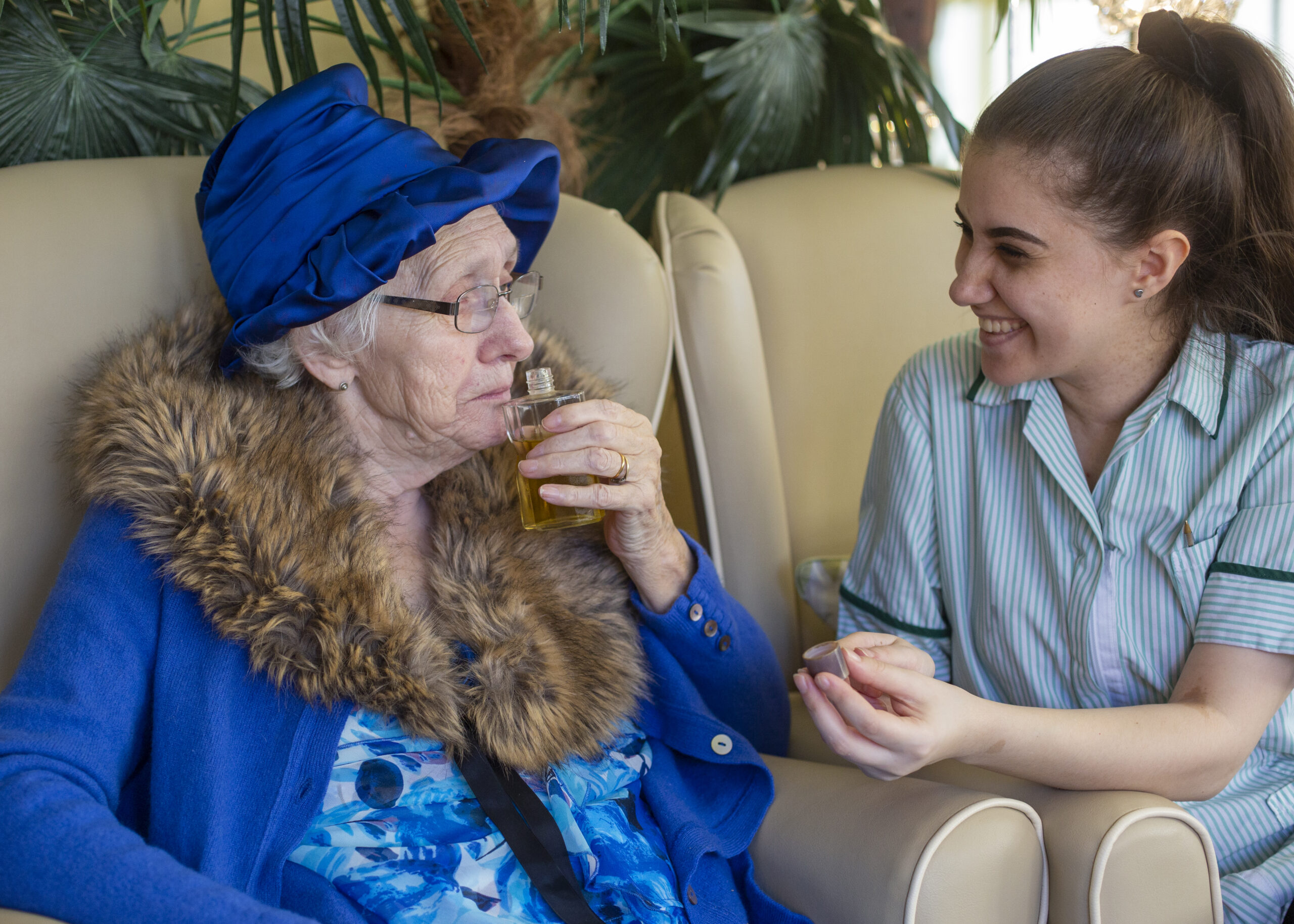Helen Johns, writes…
The definition of reminiscence I like best is taken from The Reminiscence Activities Training Manual: A Step by Step Guide by Bernie Arigho. Arigho describes reminiscence as ‘The recollection of one’s life experiences’. The book goes on to explain that when we reminisce, we experience the associated feelings and emotions connected with the experience being recalled, the experience of life since, and present feelings about life too.
This description shows what a powerful experience reminiscence can be. If we agree that all of us have a responsibility to help people live well in care homes, then reminiscence gives us an easily accessible way to support that experience.
The key is to make the opportunities for reminiscence part of everyday care home life routines.
Here are some ideas on how this can be achieved:
- Using the Daily Sparkle newspaper as a daily opportunity to reminisce around what happened on that day in years gone by. The accompanying Carer’s notes provide some reminiscence prompts and questions to get the conversation going and to keep it flowing.
- Using other articles in newspapers or magazines to stimulate conversation on what we already know about a person’s life history and current preferences.
- Using music to tap into people’s strong memories of important times of their lives. A conversation about a song that you hear, a singer, or the story behind the song can generate an interesting discussion.
- Using everyday items to compare how things were done in days gone by. For example, making toast in the morning using a toaster is an opportunity to chat about how people made toast in the past, different breakfast choices, or morning routines.
- Using carefully placed resources around the home, for example a bag of knitting, a sewing box or craft items to stimulate discussion about skills.
- Using photos, postcards and large print books to generate discussion around holidays, families and events.
The real magic of reminiscence lies in the positive exchange that takes place between the people sharing the experience.
Here are some tips to get people started:
- Think about the routines in your care setting (breakfast time, coffee morning etc). Consider how care staff can use these routines to try out reminiscence on a small scale.
- Encourage staff to start small and make it a natural, caring, shared experience.
- Congratulate staff when you see them doing a good job. One of the most touching things I have ever seen was watching a carer and a resident, heads together, whilst they rummaged through a jewellery box discussing the types of necklaces the lady liked best.
- Once your colleagues experience the positive effect of a meaningful reminiscence experience on both the person they are supporting and on how they feel themselves, they will be hooked.
This is a very short summary around reminiscence, but we cover it in much more detail in our new course – ‘Activities: Using Therapeutic Approaches’. Watch out for details on our training page later in the year.
Helen Johns has been developing and delivering our Activity Coordinator training courses since April 2017. As well as working for The Daily Sparkle, Helen provides training and consultancy for carehomes in relation to activity and wellbeing. She has also worked as an Expert by Experience for CQC inspections. You can find details of all upcoming training courses here.




